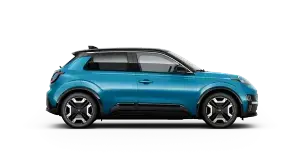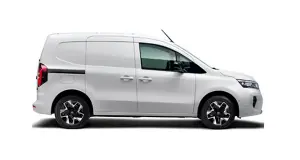Nissan Juke 2024 Owners Manual
7.22.1.3. IEB system limitations

Listed below are the system limitations for the IEB system. Failure to operate the vehicle in accordance with these system limitations could result in serious injury or death.
The IEB system cannot detect all vehicles, pedestrians or cyclists under all conditions.
The IEB system does not detect the following objects:
Small pedestrians (including small children) and animals.
Pedestrians in wheelchairs or using mobile transport such as scooters, child-operated toys, or skateboards.
Pedestrians who are seated or otherwise not in a full upright standing or walking position.
Oncoming vehicles.
Crossing vehicles.
Obstacles on the roadside.
The IEB system has some performance limitations.
If a stationary vehicle is in the vehicle's path, the IEB system will not function when the vehicle is driven at speeds over approximately 80 km/h (50 MPH).
For pedestrian and cyclist detection, the IEB system will not function when the vehicle is driven at speeds over approximately 80 km/h (50 MPH) or below approximately 10 km/h (6 MPH).
The IEB system may not function for pedestrians and cyclists in darkness or in tunnels, even if there is street lighting in the area.
The IEB system may not function if the vehicle ahead is narrow (e.g. a motorcycle).
The IEB system may not function if the speed difference between the two vehicles is too small.
The IEB system may not function properly or detect a vehicle, pedestrian or cyclist ahead in the following conditions:
Poor visibility (conditions such as rain, snow, fog, dust storms, sand storms, and road spray from other vehicles).
Driving on a steep downhill slope or roads with sharp curves.
Driving on a bumpy road surface, such as an uneven dirt road.
If dirt, ice, snow or other material is covering the radar sensor area.
Interference by other radar sources.
The camera area of the windscreen is fogged up, covered with dirt, water drops, ice, snow, etc.
Strong light (e.g. sunlight or high beams from oncoming vehicles) enters the front camera. Strong light causes the area around the pedestrian or cyclist to be cast in shadow, making it difficult to see.
A sudden change in brightness occurs. For example, when the vehicle enters or exits a tunnel or a shaded area or lightning flashes.
The poor contrast of a person to the background, such as having clothing coloured or patterned similar to the background.
The pedestrian's profile is partially obscured or unidentifiable due to the pedestrian transporting luggage, wearing bulky or very loose-fitting clothing or accessories.
When the system has never detected an obstacle since the vehicle was driven after the engine was started.
The system performance may degrade in the following conditions:
The vehicle is driven on a slippery road.
The vehicle is driven on a slope.
Excessively heavy luggage is loaded in the rear seat or the luggage area of your vehicle.
The system is designed to automatically check the sensor (radar and camera) functionality, within certain limitations. The system may not detect some forms of obstruction of the sensor area such as ice, snow, stickers, etc. In these cases, the system may not be able to warn the driver properly. Be sure that you check, clean and clear sensor areas regularly.
In some road or traffic conditions, the IEB system may unexpectedly apply partial braking. When acceleration is necessary, continue to depress the accelerator pedal to override the system.
Excessive noise will interfere with the warning chime sound, and the chime may not be heard.
Braking distances increase on slippery surfaces.
The Intelligent Emergency Braking system may operate when the following are similar to the outlines of pedestrians or cyclists, or if they are the same size and position as a vehicle's and motorcycle's tail lights.
Paint, a shadow or a pattern on the road, roadside or wall (including faded and unusual road markings).
A shape formed by road structures ahead (such as tunnels, viaducts, traffic sign, reflectors installed on the side of vehicles, reflection sheets, and guardrails), road side objects (trees, buildings) and light sources.
A shape formed by road side objects, such as trees, lighting, shadows, or buildings.
The Intelligent Emergency Braking system may react to:
objects on the roadside (traffic sign, guard rail, pedestrian, cyclist, motorcycle, vehicle, etc.)
objects above the road (low bridge, traffic sign, etc.)
objects on the road surface (railroad track, grate, steel plate, etc.)
objects in a parking garage (beam, pillar, etc.)
pedestrians or cyclists or motorcycles approaching the travelling lane
vehicles, pedestrians, cyclists, motorcycles or objects in adjacent lane or close to the vehicle
oncoming pedestrians, cyclists


When driving on some roads, such as winding, hilly, curved, narrow roads, or roads which are under construction or on a slope, the sensor may detect vehicles in a different lane, or may temporarily not detect a vehicle travelling ahead. This may cause the system to work inappropriately.
The detection of vehicles may also be affected by vehicle operation (steering manoeuvre or travelling position in the lane, etc.) or vehicle condition. If this occurs, the system may warn you by blinking the system indicator and sounding the chime unexpectedly. You will have to manually control the proper distance to the vehicle travelling ahead.










